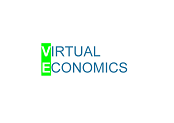Research Progress and Knowledge Structure of Inclusive Growth: A Bibliometric Analysis
DOI:
https://doi.org/10.34021/ve.2021.04.04(1)Keywords:
inclusive growth, economic growth, sustainable development, bibliometric analysisAbstract
Environmental and socio-political challenges of today show that traditional models of economic growth and valuation methods, which are based primarily on financial profitability, are not always optimal, but the concept of inclusive growth is gaining popularity. In January 2018, the Inclusive Growth and Development Index was presented at the 48th World Economic Forum in Davos. But the relatively new concept of inclusive growth and its economic meaning remains insufficiently studied and needs further research. Accordingly, the paper aims at providing a bibliometric overview to determine the current state of scientific production in "inclusive growth". Scopus Database was selected as the primary data source. The scientific literature was searched based on the titles, abstracts, and author keywords with the following search strategy: "inclusive growth". A time span of 10 years was set, and thus, only literature published from 2012 to 2021 was included. To obtain a more comprehensive analysis VOSviewer 1.6.16 software was used for mapping and visualizing bibliometric networks of scientific publications. A study of the geographical affiliation of researchers in this area showed that the most significant number of publications was published by scientists from the USA, India, Great Britain, China, South Africa, Australia, Spain, Italy, Canada, and Germany. The average growth rate of publications in this field is the highest among scientists in Spain, Italy, and China. The interest in the topic is constantly growing. As a result of a bibliometric analysis of 2000 publications indexed by the Scopus database from 2012 to 2021, devoted to the issues of inclusive growth, 8 clusters were identified: environmental problems, role, and opportunities of stakeholders in increasing inclusive growth, population movement under the influence of micro-and macro-environmental factors to achieve sustainable development goals, inequality, analysis of economic and population development factors in the context of achieving sustainable development goals, inclusive growth essence, and parameters, poverty. The issues of regional aspects and mechanisms for attaining inclusive growth goals, as well as issues of regulating and ensuring stakeholders' interests, including issues of communication and promotion of inclusive growth paradigm, risk assessment of implementing inclusive economic principles, and formalization of impact factors remain unexplored.
Downloads
References
Allmendinger, P., & Haughton, G. (2012). Post-political spatial planning in England: A crisis of consensus? Transactions of the Institute of British Geographers, 37(1), 89-103. https://doi.org/10.1111/j.1475-5661.2011.00468.x
Ameer, R., & Othman, R. (2012). Sustainability practices and corporate financial performance: A study based on the top global corporations. Journal of Business Ethics, 108(1), 61-79. https://doi.org/10.1007/s10551-011-1063-y
Boarini, R., Causa, O., Fleurbaey, M., Grimalda, G., & Woolard, I. (2018). Reducing inequalities and strengthening social cohesion through inclusive growth: A roadmap for action. Economics, 12(1) https://doi.org/10.5018/economics-ejournal.ja.2018-63
Boarini, R., Causa, O., Fleurbaey, M., Grimalda, G., & Woolard, I. (2018). Reducing inequalities and strengthening social cohesion through inclusive growth: A roadmap for action. Economics, 12(1) https://doi.org/10.5018/economics-ejournal.ja.2018-63
Chaikin, O., & Usiuk, T. (2019). The imperatives of inclusive economic growth theory. Scientific Horizons, (11), 3-12. https://doi.org/10.33249/2663-2144-2019-84-11-3-12
Cichowicz, E., & Rollnik-Sadowska, E. (2018). Inclusive growth in CEE countries as a determinant of sustainable development. Sustainability, 10(11), 3973. https://doi.org/10.3390/su10113973
Dalevska, N., Khobta, V., Kwilinski, A., & Kravchenko, S. (2019). A Model for Estimating Social and Economic Indicators of Sustainable Development. Entrepreneurship and Sustainability Issues, 6(4), 1839-1860. https://doi.org/10.9770/jesi.2019.6.4(21)
D'Amato, D., Droste, N., Allen, B., Kettunen, M., Lähtinen, K., Korhonen, J., . . . Toppinen, A. (2017). Green, circular, bio economy: A comparative analysis of sustainability avenues. Journal of Cleaner Production, 168, 716-734. https://doi.org/10.1016/j.jclepro.2017.09.053
Domonkos, T., & Ostrihoň, F. (2015). Inclusive growth in selected central European countries. Ekonomicky Casopis, 63(9), 881-905.
Drożdż, W., Marszalek-Kawa, J., Miskiewicz, R., & Szczepanska-Waszczyna, K. (2020). Digital Economy in the Comporary World. Torun: Wydawnictwo Adam Marszalek.
Drożdż, W., Elżanowski, F., Dowejko, J., & Brożyński, B. (2021a). Hydrogen Technology on the Polish Electromobility Market. Legal, Economic, and Social Aspects. Energies, 14(9), 2357. https://doi.org/10.3390/en14092357
Drożdż, W., Mróz-Malik, O., & Kopiczko, M. (2021b). The Future of the Polish Energy Mix in the Context of Social Expectations. Energies, 14(17), 5341. https://doi.org/10.3390/en14175341
Dźwigoł, H., Dźwigoł-Barosz, M., Miśkiewicz, R., & Kwiliński, A. (2020). Manager Competency Assessment Model in the Conditions of Industry 4.0. Entrepreneurship and Sustainability Issues, 7(4), 2630-2644. https://doi.org/10.9770/jesi.2020.7.4(5)
George, G., Mcgahan, A. M., & Prabhu, J. (2012). Innovation for inclusive growth: Towards a theoretical framework and a research agenda. Journal of Management Studies, 49(4), 661-683. https://doi.org/10.1111/j.1467-6486.2012.01048.x
Gupta, J., & Vegelin, C. (2016). Sustainable development goals and inclusive development. International Environmental Agreements: Politics, Law and Economics, 16(3), 433-448. https://doi.org/10.1007/s10784-016-9323-z
Hasmath, R. (2015). Inclusive Growth, Development and Welfare Policy: A Critical Assessment, New York: Routledge Taylor & Francis Group. https://doi.org/10.4324/9781315732626
Hay, C., Hunt, T., J. & McGregor, A. (2020). Inclusive growth: the challenges of multidimensionality and multilateralism. Cambridge Review of International Affairs, 1-27. https://doi.org/10.1080/09557571.2020.1784849
Heshmati, A., Kim, J., Wood, J. A. (2019). Survey of Inclusive Growth Policy. Economies, 7, 65. https://doi.org/10.3390/economies7030065
Joung, C. B., Carrell, J., Sarkar, P., & Feng, S. C. (2013). Categorization of indicators for sustainable manufacturing. Ecological Indicators, 24, 148-157. https://doi.org/10.1016/j.ecolind.2012.05.030
Kharazishvili, Y., Kwilinski, A., Grishnova, O., & Dzwigol, H. (2020). Social Safety of Society for Developing Countries to Meet Sustainable Development Standards: Indicators, Level, Strategic Benchmarks (with Calculations Based on the Case Study of Ukraine). Sustainability, 12(21), 8953. https://doi.org/10.3390/su12218953
Kwilinski, A., Dielini, M., Mazuryk, O., Filippov, V., & Kitseliuk, V. (2020). System Constructs for the Investment Security of a Country. Journal of Security and Sustainability Issues, 10(1), 345-358. https://doi.org/10.9770/jssi.2020.10.1(25)
Lawanson, O. I., & Umar, D. I. (2019). Gender inequality and its implication for inclusive growth in Nigeria from 1980 to 2018. Asian Economic and Financial Review, 9(7), 789-806. https://doi.org/10.18488/journal.aefr.2019.97.789.806
Lee, N, & Sissons, P. (2016). Inclusive growth? The relationship between economic growth and poverty in British cities. Environment and Planning A: Economy and Space, 48(11), 2317-2339. https://doi.org/10.1177/0308518X16656000
Marginson, S. (2016). The worldwide trend to high participation higher education: Dynamics of social stratification in inclusive systems. Higher Education, 72(4), 413-434. https://doi.org/10.1007/s10734-016-0016-x
Meerow, S., & Newell, J. P. (2017). Spatial planning for multifunctional green infrastructure: Growing resilience in Detroit. Landscape and Urban Planning, 159, 62-75. https://doi.org/10.1016/j.landurbplan.2016.10.005
Mitra, A., & Das, D. (2018). Inclusive growth: Economics as if people mattered. Global Business Review, 19(3), 756-770. https://doi.org/10.1177/0972150917713840
Nicky, R.M., & Pouw J.G. (2016). Inclusive Development: A Multi-Disciplinary Issue. Curr. Opin. Environ. Sustain., 24(2016), 108. https://doi.org/10.1016/j.cosust.2016.11.013
OECD. (2015). All on Board. Making inclusive growth happen (p. 200). Paris. Retrieved from http://www.oecd-ilibrary.org/development/all-on-board_9789264218512-en.
Shipton, D., Sarica, S., Craig, N., et al. (2021). Knowing the goal: an inclusive economy that can address the public health challenges of our time. J Epidemiol Community Health, 75, 1129-1132.
Sissons, P., Green, A. E., & Broughton, K. (2019). Inclusive growth in English cities: Mainstreamed or sidelined? Regional Studies, 53(3), 435-446. https://doi.org/10.1080/00343404.2018.1515480
Sun, C., Liu, L., & Tang, Y. (2018). Measuring the inclusive growth of China’s coastal regions. Sustainability, 10(8), 2863. https://doi.org/10.3390/su10082863
van Niekerk, A. J. (2020). Towards inclusive growth in Africa. Development Southern Africa, 37(3), 519-533. https://doi.org/10.1080/0376835X.2020.1736004
van Vuuren, D. P., Stehfest, E., Gernaat, D. E. H. J., Doelman, J. C., van den Berg, M., Harmsen, M., . . . Tabeau, A. (2017). Energy, land-use and greenhouse gas emissions trajectories under a green growth paradigm. Global Environmental Change, 42, 237-250. https://doi.org/10.1016/j.gloenvcha.2016.05.008





